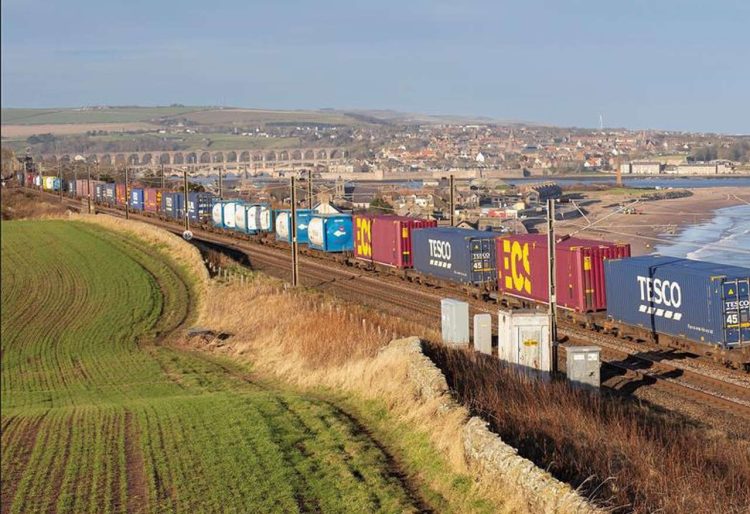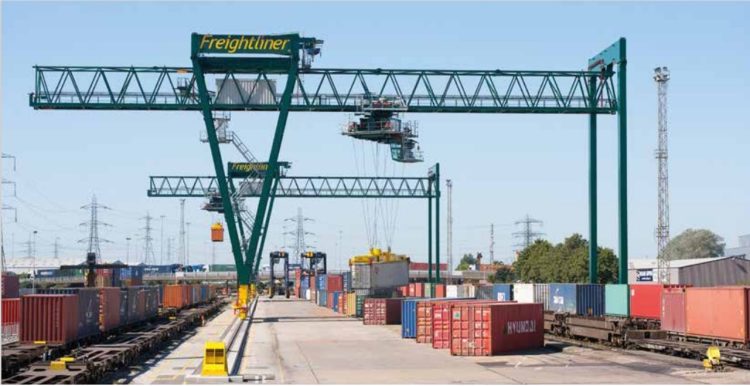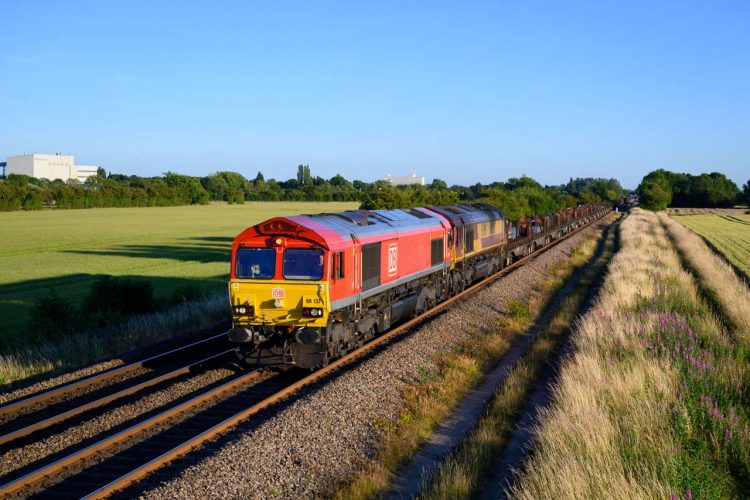Railfuture’s lukewarm response to government rail freight growth plans
In response to the government's recently published target for the growth in freight moved by rail, Railfuture[1] has given lukewarm approval to the proposals,
The freight director of Railfuture, Owen O'Neill, commented: “This is nothing to celebrate. A target of 75% growth over 26 years is only 2.2% per year. Over the last 40 years, even with the recent turmoil, GDP growth has averaged 2.0% per year.
 Channel Tunnel freight // Credit: Rail Partners
Channel Tunnel freight // Credit: Rail Partners
“The amount of freight moved is closely linked to the economy, so the ‘growth' target is effectively a no-modal-share growth target. This is the minimum cost option with no policy initiatives to drive achieving the target.
“The freight sector seems to be falling over itself in fawning admiration at the mere mention of ‘freight' and ‘growth' in the same story. We note it, that's all.
“Even diesel-hauled rail freight emits 75% less CO2 than moving the same goods by road, we need to have far more challenging modal share growth targets for rail if we are to stand any chance of reaching net zero.
 Rail freight – the future of Britain's economy. // Credit: Rail Partners
Rail freight – the future of Britain's economy. // Credit: Rail Partners
“The government claims to be supporting drivers – but even drivers can see the clear benefits of there being fewer slow-moving, pothole-magnifying HGVs on the roads, but if there is no increase in rail's modal share we will see more HGVs on our roads. HGVs are also disproportionately involved in accidents resulting in people being killed and seriously injured – particularly pedestrians and other vulnerable road users, so everyone wins from fewer HGVs.
“At the same time as announcing this lacklustre target, the government has kicked the legs out from under the ability to deliver it by cancelling the easy-to-construct and high-value section of phase 2a from Lichfield[2] to Crewe[3].
 DB Cargo Class 66 hauling a freight train. // Credit: Dan Sutcliffe
DB Cargo Class 66 hauling a freight train. // Credit: Dan Sutcliffe
“The main corridor for moving passengers from London[4] to Crewe is also the main corridor for freight. The current ‘plan' to dump HS2[5] trains onto the existing network will add more traffic to an existing set of bottlenecks, with a strong risk that freight will get squeezed out around the edges. This will result in even less freight capacity than today on our critical route for moving intermodal traffic, let alone having capacity for even this lacklustre growth target.”
References
- ^ Posts tagged with Railfuture (www.railadvent.co.uk)
- ^ Posts tagged with Lichfield (www.railadvent.co.uk)
- ^ Posts tagged with Crewe (www.railadvent.co.uk)
- ^ Posts tagged with London (www.railadvent.co.uk)
- ^ Posts tagged with HS2 (www.railadvent.co.uk)